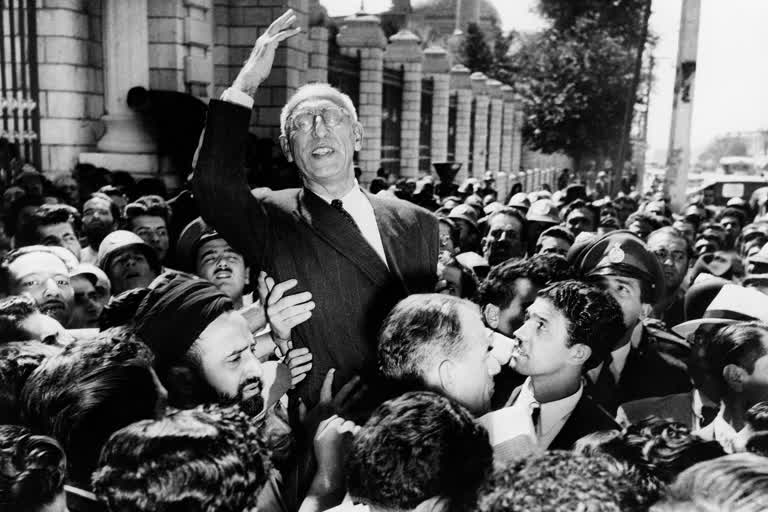Dubai:The US ambassador to Iran mistakenly told the shah in 1953 that Britain's newly enthroned Queen Elizabeth II backed a plan to overthrow the country's elected prime minister and America maintained the fiction even after realizing the error, historians now say.
The revelation, based on US diplomatic cables cited by the historians, shows how America has struggled even to this day to offer a full, unvarnished account of its actions in the coup that cemented Shah Mohammad Reza Pahlavi’s power and lit the fuse for Iran’s 1979 Islamic Revolution.
“There’s an acceptance that you’re never going to have the whole story,” said Richard Aldrich, a professor at the University of Warwick whose research on the cables will be featured in a Channel 4 documentary in Britain on Sunday. “You’re on a journey to try and achieve a better history but you’re never going to have the complete story.”
The 1953 coup ended up successfully empowering the shah, even after he fled to Baghdad and onto Italy when it looked as though it would fail. He would rule until 1979, when he fled the country before the Islamic Revolution, secretly and fatally ill with cancer.
The coup had roots in the nationalization of Iran's oil industry, which at that time was majority-owned by Britain. Mohammad Mosaddegh, who supported nationalization, then became Iran's prime minister. Britain launched a blockade on the country and ultimately saw its Tehran embassy ordered closed.
The British, who had begun drawing up plans for a possible coup, then turned to the US under President Dwight D. Eisenhower. Eisenhower, fearful of the spread of communism amid the growing Cold War with the Soviet Union, gave the go-ahead for TPAJAX the CIA codename for the coup plot.
Papers show the CIA at one point “stockpiled enough arms and demolition material to support a 10,000-man guerrilla organization for six months,” and paid out USD 5.3 million for bribes and other costs, which would be equivalent to USD 48 million today. One CIA document casually refers to the fact that “several leading members of these (Iranian) security services are paid agents of this organization.”
Read more:Prince Charles to host Macron to mark De Gaulle WWII appeal
But the coup faced problems, chief among them the shah himself. Diplomats and spies referred to him as a “weak reed” and “petulant.” The CIA dismissively referred to him as “Boy Scout,” Aldrich said.
The shah grew fearful of Mosaddegh's growing power and prepared to flee Iran in February 1953, months before the coup. US Ambassador Loy W. Henderson rushed to the palace to try to see him. Instead, he got to Hosein Ala, the shah's minister of the court, who called the shah on a palace telephone line.
Despite fears the telephone may be tapped, Henderson spoke through Ala to the shah, as the Channel 4 documentary “The Queen and the Coup” and a later diplomatic cable by Henderson recounted.
“I had just received a message indicating that very important personage for whom shah had most friendly feelings had also expressed sincere hope that shah could be dissuaded from leaving the country," Henderson wrote.
That cable, part of others released by the US State Department's historian in 2017, included a footnote mentioning another cable from the US Embassy in London.
“Foreign Office this afternoon informed us of receipt message from (Foreign Minister Anthony) Eden from Queen Elizabeth expressing concern at latest developments re shah and strong hope we can find some means of dissuading him from leaving the country,” the footnote reads.
